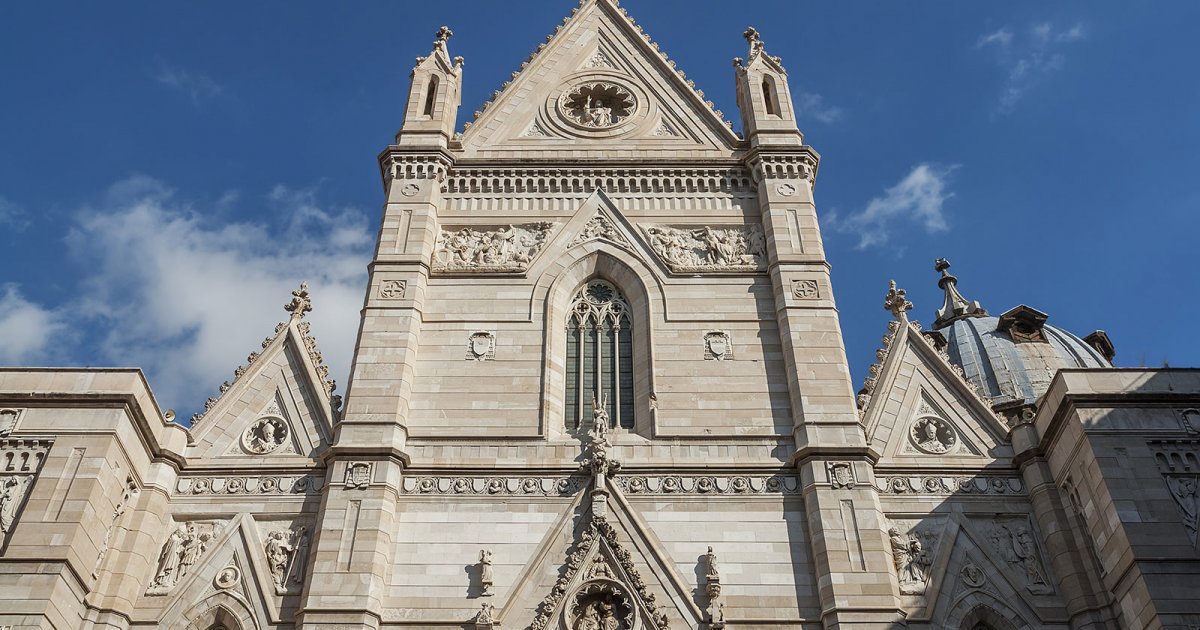CATHEDRAL, Facade
 Language: English / USA
Language: English / USA
Hi, I'm Ed, your personal guide. Together with MyWoWo, I'd like to welcome you to one of the wonders of the world.
Today I'll accompany you through the Cathedral, one of the most beautiful monuments in Naples!
Full of history and beauty, the cathedral you're about to visit is dedicated to Our Lady of the Assumption and lies right in the heart of the Greek-Roman city among some of its oldest streets, which coincide with the modern-day Via dei Tribunali. It was actually a Roman emperor, the Christian Emperor Constantine, who initially had a basilica built in the area where a temple dedicated to Apollo had originally stood.
In this architectural complex you can still find traces of ancient buildings of worship: the Oratory of Santa Maria del Principio that was commissioned by the first bishop of Naples, the Basilica of Santa Restituta from the fourth century, and the Baptistery of San Giovanni in Fonte. All these pre-existing buildings were either destroyed or embedded in the Cathedral when its construction began in 1270 at the behest of the Angevars; the Gothic-style church was completed about forty years later. Neapolitan and Tuscan architects were responsible for its design.
The façade is 50 meters tall and has undergone many reworkings over the centuries: the first renovation took place in the mid-1300s after an earthquake. Of the original façade all that remains are the sculptures that you can see in the central portal that depict the lions and the Madonna. The other figures next to them are from the fifteenth century. Tradition holds that the right portal is only opened on the three holidays each year that are dedicated to Saint Januarius, and for weddings of members of the Minutolo family. The actual façade is the result of a neo-Gothic style refurbishment designed in the late 1800s.
FUN FACT: if you're in Naples on the Saturday before May 1st, September 19th, or December 16th, you can't miss the traditional ceremony where Saint Januarius's blood liquefies. The archbishop of Naples takes the casket with the patron saint's blood and lightly shakes the ampoules: if their contents become fluid, the crowd of faithful Catholics exults. One of the ampoules is three-quarters full, and the other, smaller one is half empty, because when Charles of Bourbon became the King of Spain, he took a little blood with him before he left! In 1991 an analysis confirmed that they actually contain hemoglobin, a substance present in blood.



